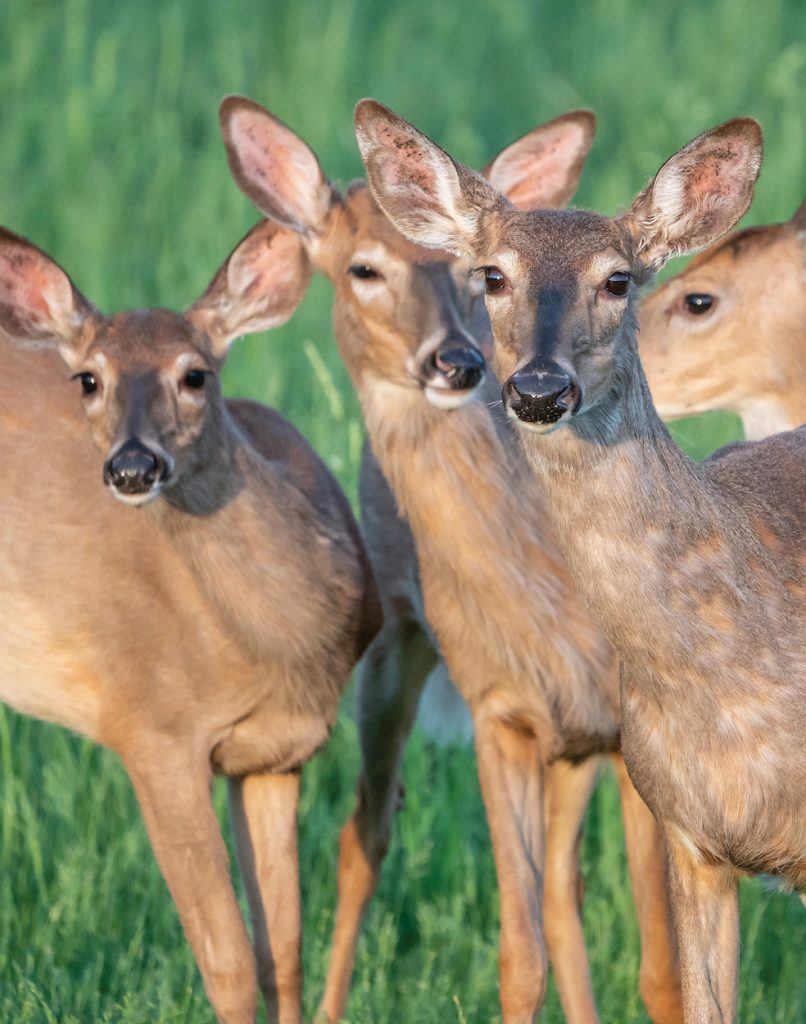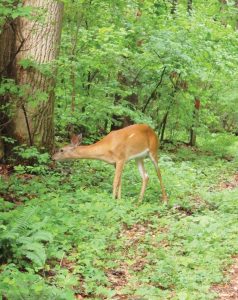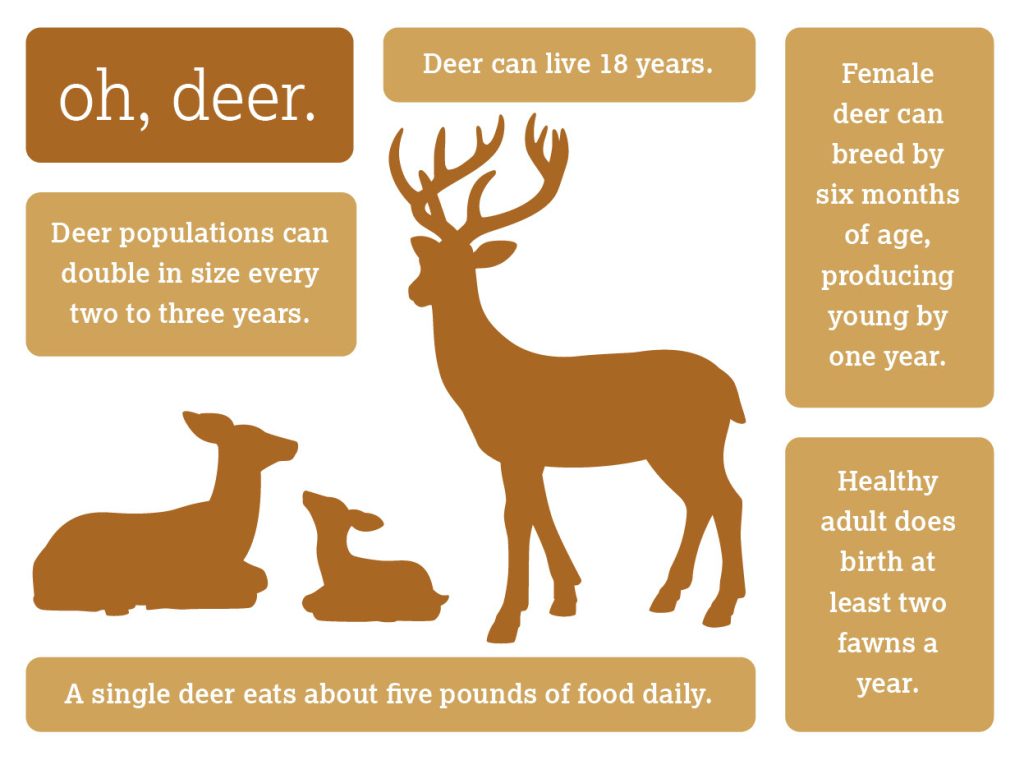Damage Control
Pennsylvania is home to an astonishing 32 deer per square mile
The most dangerous wild animal in Pennsylvania causes hundreds of injuries or deaths every year. It’s ruining crops, damaging timber harvests and changing the forest composition. Yet it’s the official state animal: the white-tailed deer, and its population is 10 times what our region’s forests can handle.
The History

Before the European colonization of our area, white-tailed deer were in balance with their forest habitat, according to experts from Penn State. The land we now call Pennsylvania had an estimated eight to 10 deer per square mile.
For thousands of years, Native peoples kept deer populations in check through hunting. Large predators — such as mountain lions, bears and wolves — were an added control. All that changed with the arrival of settlers from across the Atlantic, who hunted deer almost to local extinction.
In the early 1900s, the newly formed PA Game Commission began stocking deer brought in from other states and lobbied state government to enact legal restrictions on hunting. The deer population rebounded quickly.
Today, Pennsylvania is home to an estimated 1.5 million white-tailed deer, according to the state Game Commission. That’s about 32 deer for every square mile.
The Impacts
“High deer populations in most of Pennsylvania have greatly altered forest understories,” said Roger Latham, Ph.D., an ecologist and conservation biologist with Continental Conservation and a former member of Natural Lands’ Board of Trustees. “To the casual observer, the woods still look green, but they’re much altered. In place of the diverse, multi-storied vegetation that was the norm, there are just a few species, either not preferred by deer or resilient to repeated browsing.”
Deer populations impact more than just the forest and its flora and fauna. When our woodlands aren’t in balance, they can’t support the insects that make life possible. The loss of native plants and trees means caterpillars have no food to eat. Fewer caterpillars mean songbirds can’t feed their young. And the ripples continue through the interconnected web we humans are part of.
Human health is more directly impacted largely through tick-borne illnesses and car crashes. In 2023 alone, 6,315 car crashes were caused by deer, according to PennDOT, resulting in 23 fatalities.
Another concern, in a recent statewide study, nearly 40% of ticks tested positive for Lyme disease. As climate change brings milder winters that favor tick survival, Lyme disease is now a year-round threat.
“The bottom line is that humans have been manipulating the deer population — and by extension the ecosystem — for thousands of years,” said Josh Saltmer, Natural Lands’ wildlife management coordinator. “Ironically, to keep from losing our forests, we are now compelled to continue the manipulation.”
Some Solutions

Saltmer oversees Natural Lands’ successful deer hunting program, which has operated for 30 years. Hunters must apply to participate in the program, complete regular training and proficiency testing, and comply with strict safety protocols. The program emphasizes the removal of does as the best way to reduce and maintain populations at our nature preserves.
“We don’t rely on hunting alone to safeguard our forests,” said Saltmer. “We use tree tubes to protect the tree seedlings we plant. We’re always working to remove invasive plants and reestablish native species. We know we can’t just sit back and let nature ‘take its course’ because we altered that course generations ago.”
The Need to Act
Natural Lands’ Reineman Preserve in Carlisle, PA is an instructive example of why inaction is not an option. The original donor stipulated no hunting at the 3,200-acre property. With more than 100 deer per square mile, there’s a total lack of understory vegetation. Canopy trees of oak, hickory and beech drop their seeds only to have them all consumed by deer, preventing germination. As these remaining trees die, more sunlight penetrates to the forest floor, where a carpet of invasive Japanese stiltgrass thrives, unpalatable to deer. The forest at Reineman is a jarring combination of tall trees and low, green grass, with nothing in between.
Biologists at nearby Dickinson College have confirmed the complete absence of tree seedlings and the bleak future for this forest if deer roam unchecked — it will gradually degrade into an impoverished savanna, unable to sustain life beyond invasive species. Even the deer causing this destruction will not be able to survive there.
So, when you visit your favorite preserve or state park this fall and read signs indicating that controlled hunting occurs there, know that this activity is essential to forest health. It is, however ironically, a key to white-tailed deer survival as well.

Natural Lands is dedicated to preserving and nurturing nature’s wonders while creating opportunities for joy and discovery in the outdoors. As the region’s oldest and largest land conservation organization, member-supported Natural Lands has preserved more than 125,000 acres, including 42 nature preserves and one public garden of more than 23,000 acres. Nearly five million people live within five miles of land under the organization’s protection. Land for life, nature for all. NatLands.org.
